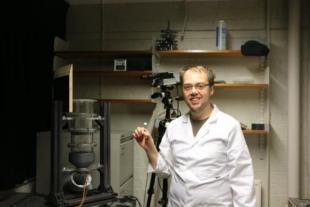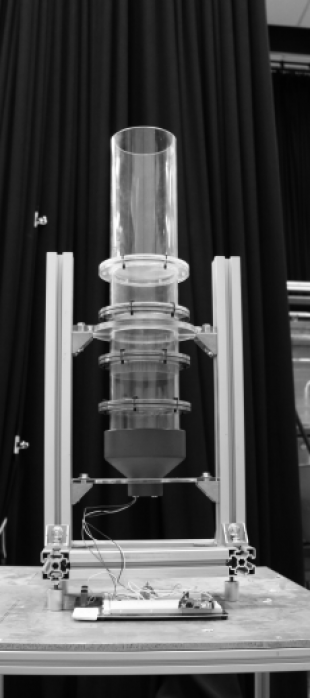Aims
The dandelion fruit consists of umbrella-like filaments and a weight (the seed) at the bottom, which together resemble a parachute at first glance. However, its flight mechanisms remain unexplained since the engineering principles of parachutes cannot apply at the small surface area and flow scales involved.
Using computer simulations and experiments, we are analysing the engineering of the fruit structure and the fluid-structure interaction to identify the key design features that confer its remarkable flight capacity.
Furthermore, the filaments interact with water in two distinct modes: repelling water in light rain, but attracting water under heavy rain. We are characterising the structural and wettability features of the fruit to identify the design features that are responsible for its unique modes of interaction with water.
Dandelion fruit flight
Although the physics and design rules of man-made parachutes are well understood, the flow around the miniature parachute of the dandelion is not. For example, manmade parachutes typically use low-porosity fabric for their canopy, whereas the dandelion has evolved a parachute that is mostly empty space. Why has the dandelion opted for less parachute material? In this project, we have revealed why, at this small scale (i.e. low Reynolds number), the same rules for big parachutes do not apply.
Previous models of the dandelion fruit considered that each filament that makes up the parachute acts independently and that the total drag force supplied by the parachute can be found by adding up each of these contributions. The reality is very different: the dandelion’s flight capacity is enhanced by a ‘neighbouring effect’ of nearby filaments, which act together to generate a separated vortex ring (SVR) in the wake of the dandelion.
We have shown that having a low-porosity miniature parachute leads to a destabilising of this SVR, and hence a turning moment on the fruit. Instead, by evolving a highly-porous parachute, the dandelion allows just enough airflow through its canopy to stabilise this SVR, eliminating this turning moment. At the same time, the drag coefficient of the parachute is quadruple that of a low-porosity one – making it a highly effective decelerator. Our research shows that the dandelion’s parachute is an exquisite example of less is more.
Biological hairs
The biological world is full of hairs and hairy structures just like the dandelion fruit. Whiskers and fur are found in mammals, arthropods have hairs and antennae and many plants bear protruding hairs from leaf, stem and root surfaces. We have been investigating how the structural design of hairs allow organisms to interact with diverse aspects of their environment.
Hairs have a wide range of functions: detecting nearby objects, protection, insulation, nutrient acquisition, air or water trapping and attachment to surfaces. Hairs achieve these functions by, for example, permitting bending, enhancing surface area or placing many hairs close together to direct fluid movement.




